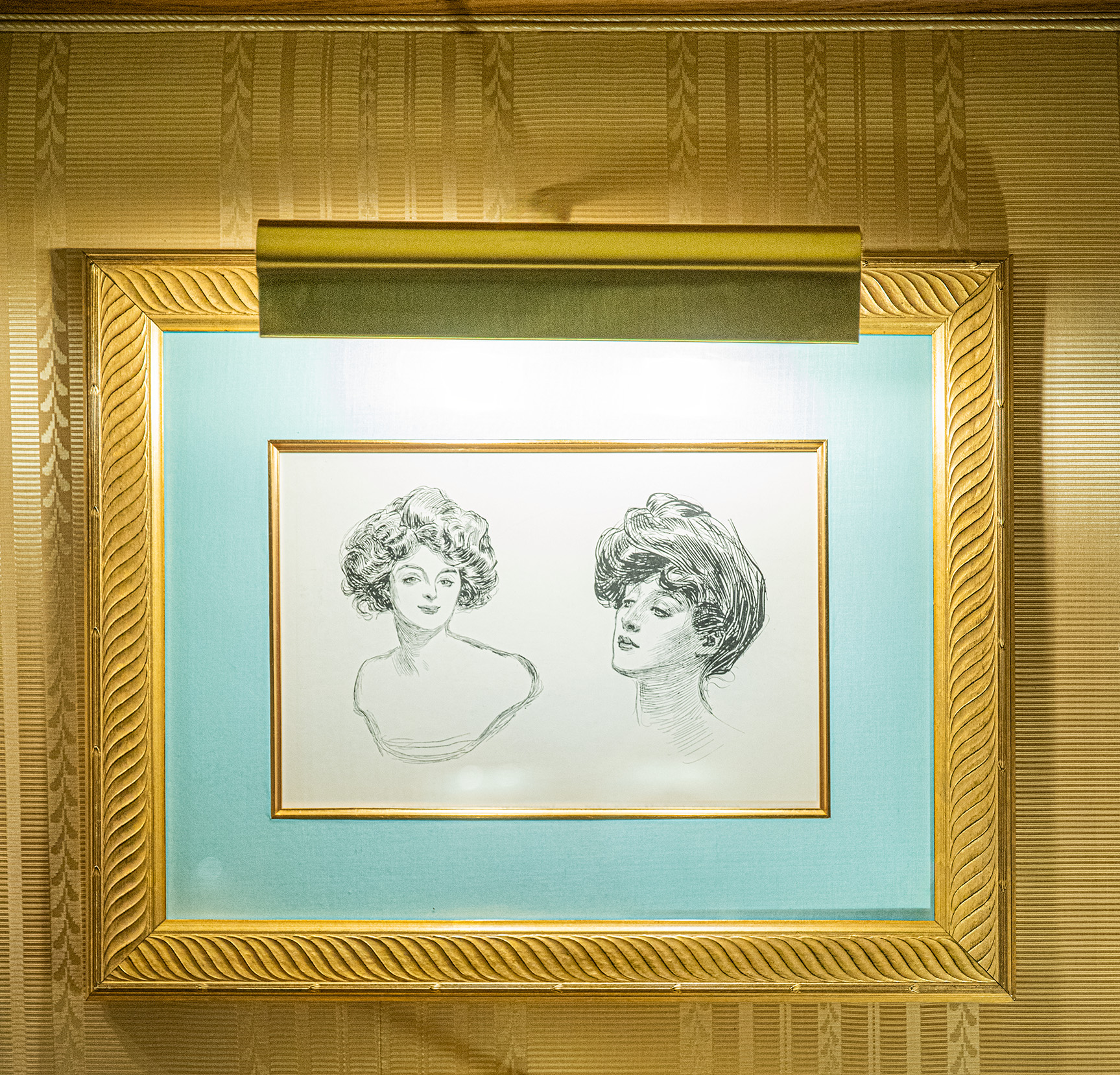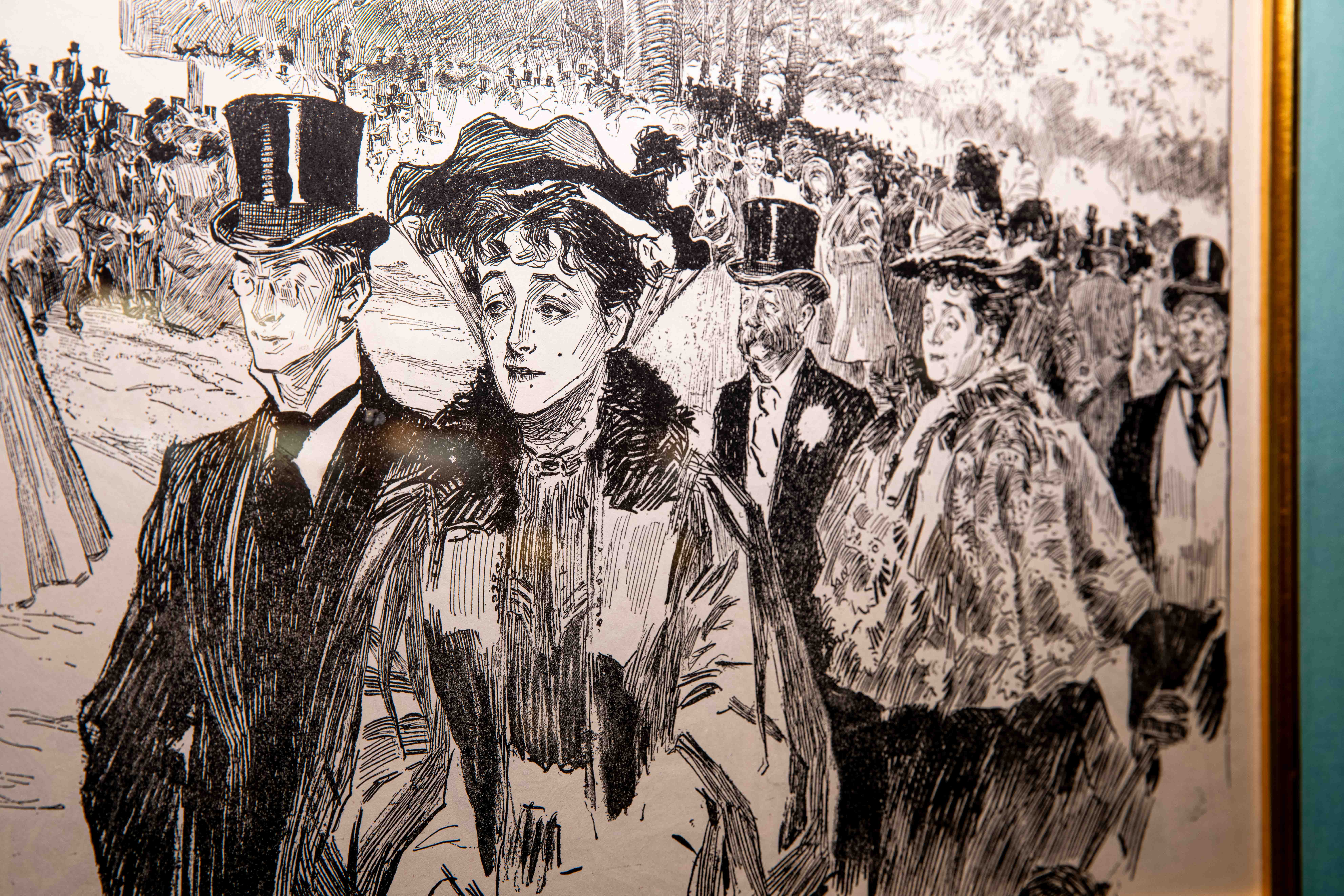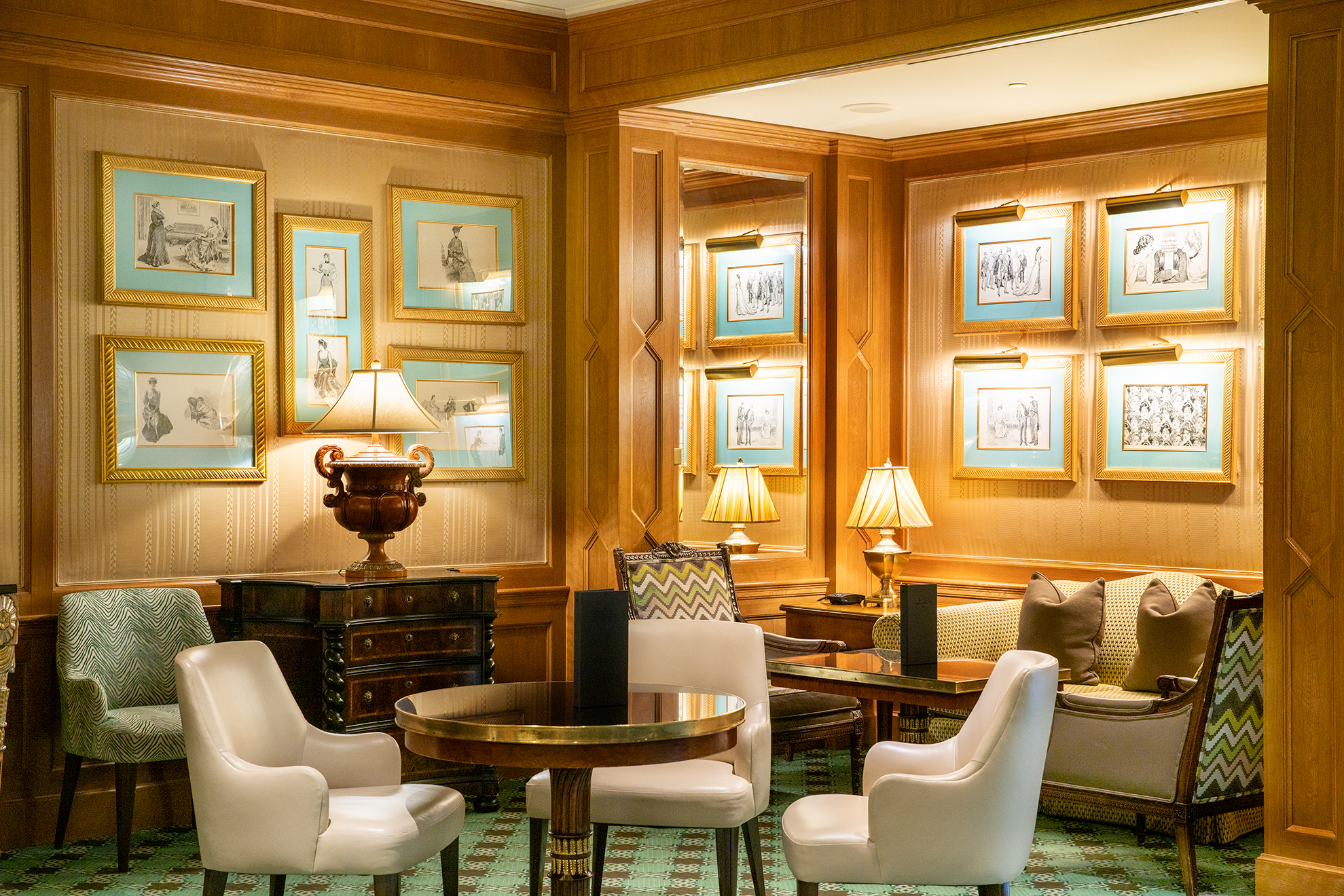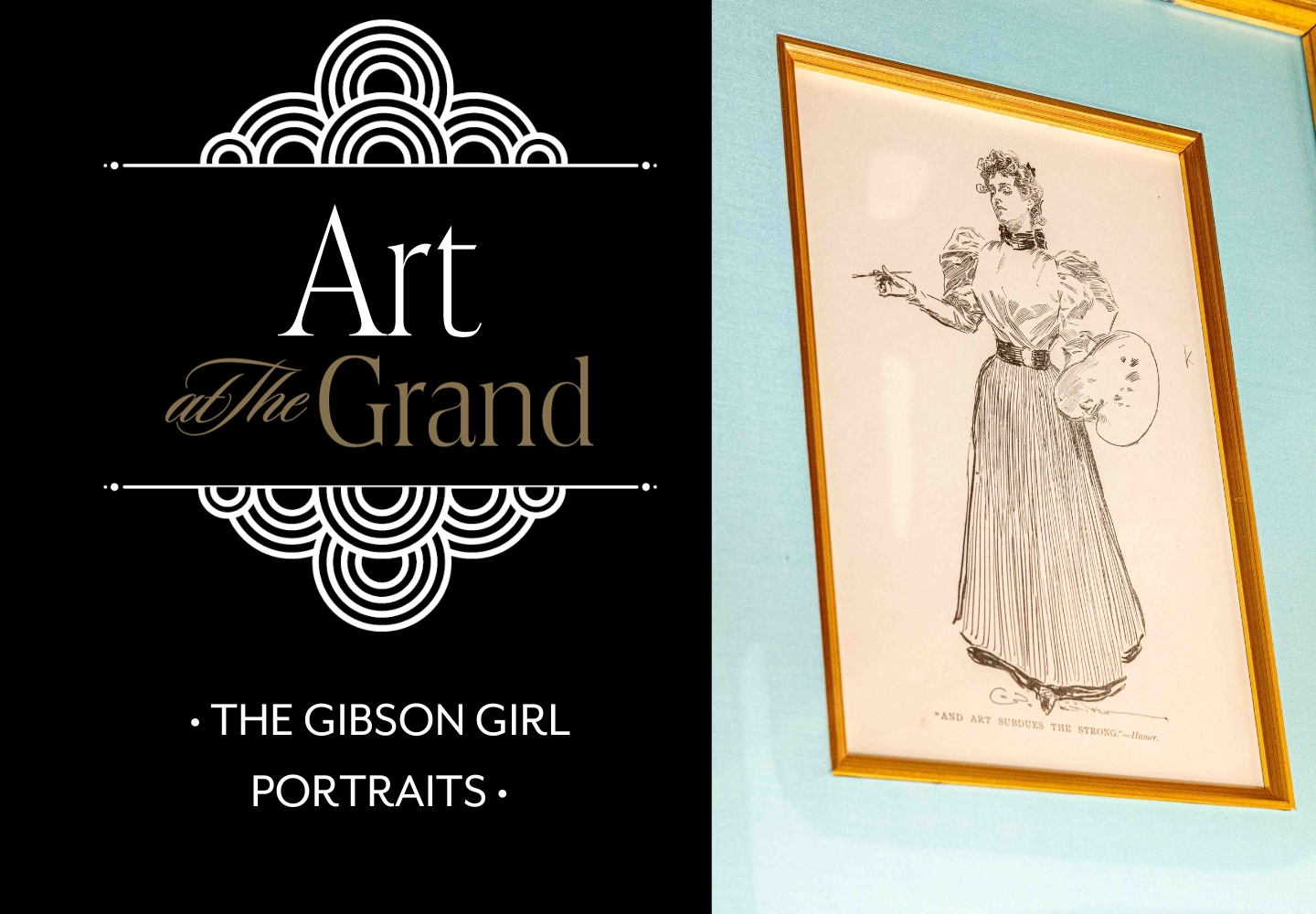Art at The Grand is a series dedicated to focusing on one of the many treasures featured in the self-paced Art Tour at The Grand America. Today, we are taking a closer look at the “Gibson Girl” portraits, a collection of which decorate the walls of The Gibson Lounge.
At the start of the 20th Century, women were more visible in society than ever before. They were active, riding bicycles or swimming at the beach, and had, to a degree, more control over their own destinies. As a pen-and-ink illustrator of daily life and society, Charles Dana Gibson depicted scenes featuring women who portrayed an “ideal” of the Turn-of-the-Century era. These depictions of women, especially beautiful women, became the ubiquitous “every-woman” and were named, after the artist, the Gibson Girl.

The Man Behind “the Girl”
Charles Gibson was born in 1867 in Roxbury, Massachusetts. From an early age, he was interested in art, so his parents enrolled him in New York City’s Art Students League. In 1886, at the age of 19, Gibson sold his first pen-and-ink drawing to Life magazine, which had only begun publishing its “slice of life” journal three years prior. Through his publication in Life, Gibson quickly garnered a national reputation, especially among the circles of upper-middle-class society.
A descendant of Massachusetts politicians, Gibson married Irene Langhorne, the daughter of a prominent railroad industrialist. Not only were both of the Gibsons born into the upper echelon of polite society, but Charles also built his own wealth through his hugely popular works of art. In 1904, Gibson signed a contract with Collier’s Weekly for $100,000 (roughly equivalent to $3.4 million today) in exchange for 100 illustrations over four years.
During World War I, Gibson was hired under the Federal Committee of Public Information to manage pro-government illustrations for posters, billboards, and other images used to promote the war effort. This position led to his eventual ownership of Life magazine. Highly influential, wealthy, and powerful, Gibson retired in the early 1930s to devote more time to developing his skills as an oil painter.

The Faces in the Frames
While Gibson sketched scenes of all sorts of people from all sorts of backgrounds, his depictions of women took on a life of their own. These so-named “Gibson Girls” presented an image of upper and upper-middle-class women that was, in one respect, progressive for its time. These women were active participants in their lives and were often portrayed teasing men or having the upper hand in interactions between the sexes. Still, most of Gibson’s portraits showed women only in the domestic sphere or in pursuit of romantic relationships, which, perhaps unintentionally, perpetuated older social mores about women and their limitations.
Visually, Gibson Girls are immediately recognizable. Whether Gibson’s illustrations set the standard of beauty for the time or were mere representations of a standard that was already in place is hard to say. From their hair—the bouffant, pompadour, and chignon style—to their bodies—an exaggerated “S-curve” achieved through corseting—to the activities they participated in, all the girls were primarily uniform. Above all, Gibson Girls were tall, slender, and beautifully demure.

The Gibson Lounge
At The Grand America, our classic cocktail lounge takes its name from Charles Gibson and his world-famous illustrations. The Gibson Lounge is decorated with dozens of Gibson illustrations. The works of art and pieces of history create a sophisticated yet playful atmosphere.
Join us for your next cocktail hour and, as a nod to the Lounge’s namesake, try Mr. Gibson’s favorite cocktail, which was eventually named after him: “The Gibson Martini.” A classic gin martini with a pickled onion garnish in place of a more traditional olive or twist of lemon zest.

